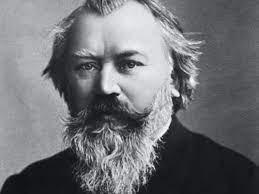You are here
A Passionate Pastoral Symphony
Johannes Brahms (1833-1897) was a German composer of the mid-romantic era. He was born in Hamburg but spent much of his life in Vienna. At a young age, he learned to play the violin and the basics of the cello. At age 7, he studied piano with Otto Friedrich Willibald Cossel. Cossel said Brahms “could be such a good player, but he will not stop his never-ending composing.” Brahms did in fact become a virtuoso pianist, but his compositions are what people know him best for today.
Though it took him more than 10 years to write his melancholy Symphony No. 1, he completed his Symphony No. 2 in just four months. In 1876, Brahms left Vienna and began spending time in the countryside in Pörtschach, a lakeside town in southern Austria. It would be the first of three summers that he’d spent there. Inspiration for the symphony came from mountain views and daily swims at dawn. It was premiered to wide acclaim by the Vienna Philharmonic in December 1876. Critics compared this new work by Brahms to Beethoven’s Symphony No. 6 "Pastoral."
Brahms’s Symphony No. 2 is indeed mostly pastoral and idyllic. The ESO brass, winds, and strings share a serene melody to open the symphony. However, clouds loom in the form of a drum roll and brass dirge, briefly interrupting the pastoral feeling.
Feel the emotion at the start of the second movement as the cellos play an elegant melody. A musical storm erupts and instability builds, but the dark mood doesn’t last long! The clouds part and a lively melody similar to a country dance lightens the feel, just in time for a finale that radiates energy and optimism. The final movement races to one of the most ecstatic conclusions of any symphony!
